Mentors and Interns, Oh My!
By Amy Nelson
By Jessica Hardesty Norris
This issue made the editorial staff feel old, and it made us look back on some of the formative internships and mentoring opportunities that we have had. For many, offering internships is a way of recognizing the privilege we have enjoyed and giving back to the profession. Jessica Hardesty Norris, who ran internships for WWF and Audubon in a former life, recounts her most instructive mentor experience and offers advice for any of you who feel inspired to reach out to young people through your firm.
David was my last interview of the day. The coffee I had just ordered was distressingly small, and I thought longingly of the bottomless cups in US diners. I looked at the clock. 10 minutes until our 4:00 appointment, but in Peru, I knew that could mean anywhere from 15 to 45 until we would get started.
I had arrived five days earlier to study altitudinal migration in Andean hummingbirds, new to Cuzco but with three years of living in South America under my belt. My first step was to find assistants, so I spent my second altitude-woozy day hanging flyers around the local college’s biology department. The email responses started soon after. All were young men, but deep down, I figured that was probably for the best. The work of hacking net trails through the jungle is brutally physical, and I needed heavy manual labor as much as biological savvy. Earlier that day, I had met the young man I thought I would take, the bright, voluble Sebastian.
A young woman approached the table just before 4:00.
“Are you the doctor?” she asked.
“Well, no, I am not a doctor,” I answered, smiling.
“The one who studies birds?” she pressed.
“Oh! Then, yes. But I’m not a doctor yet,” I said. She bent down to give me the gentle buss to the cheek that young Peruvians use to greet each other.
“I’m Davi.” I quickly reoriented myself. She was in her early twenties, with a round figure and dimples. She had taken care with her appearance that day, showy earrings, long hair glossed, high heeled sandals under tight jeans, and dramatically dark lip liner. A stark contrast with my own mannish field clothes and boots. I immediately felt a little awkward, knowing that she didn’t fit the profile of what I was looking for at all. After her initial introduction, she sat and became very shy. I told her a little bit about the work, leaving pauses for questions that never came. The questions I asked her were answered in monosyllables. I tried to wrap up after about 15 minutes, telling her that I appreciated her sending a resume and that I would be in touch. When I stopped talking all together, she finally said:
“I want to know if you will hire me for the job.”
I can’t remember exactly how I answered, only that it was uncomfortable and I felt guilty and I managed to extract myself. I left the restaurant and emailed Sebastian that the job was his if he wanted it. I was pretty sure that he would. I was offering a stipend that was a good wage for a college student in a country with rampant unemployment and few opportunities. I figured that was what drew Davi, a sort of a hail Mary attempt to get a paying job. Nevertheless, I emailed the rejected candidates and offered to take them with me as volunteers. Only Davi said yes. I figured the worst case scenario wasn’t that bad – buses back to Cuzco would run from our field site every other day.
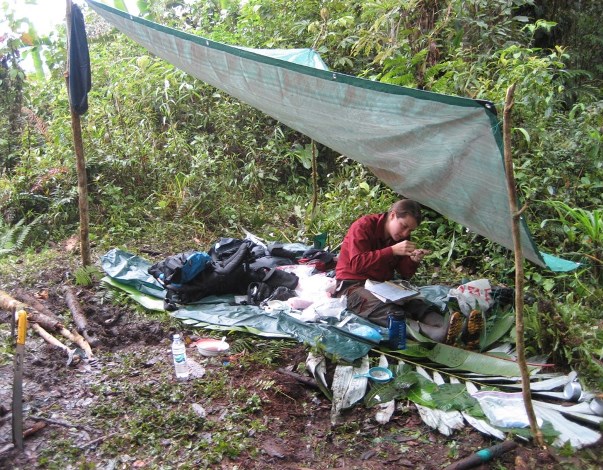
So here’s the punchline: Davi kicked ass. The early days setting up our net runs were miserable even for me. We worked through blisters, insane plagues of cloud forest bugs, ramen for dinner night after night, and total physical exhaustion, rinsed and repeated for days on end. She quickly demonstrated that she was not only tough as nails but also smart. She mastered the complex data sheets (in English) instantly and helped me with insights as we talked through the science and intent of the project. I pulled her aside after the first few days and told her I would pay her the same as Sebastian. She taught me more about how hard it was to get started in the profession. I had unwittingly skirted the normal procedure for hiring by posting my flyers – usually all such opportunities were curated by the professors and awarded to an insider clique.
The story has a pretty fantastic ending. A prominent conservation organization came to town to hire a field coordinator at the end of the summer, and Davi went up against dozens of experienced students and assistants from Cuzco. She read everything she could find about the organization. She read the science papers its leaders published in grad school. I wrote her a recommendation that was two single-spaced pages. We talked about all the ways to improve from our interview. We practiced. We drank Pisco Sours to loosen up and practiced more. When the day arrived, she called me minutes after leaving the interview. She had walked in and when they asked the first question, “my tongue escaped!” she said. She was nervous and ran through everything she had to say without pausing. The lead biologist laughed and told her that usually he asked more than one question, but then he canceled the rest of his interviews and hired her on the spot. A few years after she started working for them, she married a red-headed ornithologist, and they and their beautiful children divide their time between his country and hers.
Chasing Davi
That was almost 15 years ago, now, and I still count that experience with Davi as one of the most rewarding of my professional life, even though nothing about it was an accomplishment of mine. I initially failed to identify her exceptional talent and grossly underestimated her fortitude. Despite years living in small Andean towns, I didn’t place her cultural context very well: her “timidity,” her style, her home life. Moreover, if Davi had been born in my comfortable shoes, she wouldn’t have needed an oblivious foreigner to stumble into offering her a break. Nevertheless, the joy I took in her success is something I remain eager to recapture, and it’s one of the most powerful ways professionals can directly engage in giving back opportunities that we are uniquely positioned to give.
I have since dabbled in internships and mentorships through several jobs. I was working at World Wildlife Fund when Hurricane Katrina hit and LSU closed for the semester, so I established a WWF internship for their students. I now run Charleston Audubon’s annual summer internship program. Biohabitats is currently refining and restructuring our internship program to meet broader goals than it has in previous years, primarily by investing more closely in our community. As consultants, we have a unique opportunity to open doors for young people in our field. I’d like to share a few tips from my experience running internships for Charleston Audubon and from Biohabitats’ experience from our pilot year of partnering with Green Streets Academy’s Intern program:
Finding an Intern
- Start Small: Two interns is a great number for your first year. You and your organization will learn a lot about running internships, and you can always expand in subsequent years.

- Offer money: You should at least compete with other typical summer employment options such as waiting tables. Free internships self-select a group of young people who can afford not to work for pay. They might not be the ones you most want to reach.
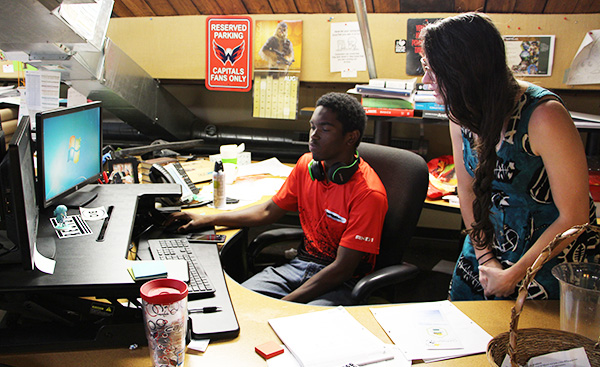
- You don’t have to start from scratch: Many well-run and established local internship programs turn away great candidates. Reach out and see if you can scoop up some they are not able to place. For example, the South Carolina Aquarium has an award-winning internship that selects 20 finalists who go through 157 hours of training before 10 are invited into the program for the summer. Charleston Audubon piggybacked on that program to offer our internship to the ones who were not selected. The lesson here is that people who run large programs often have tough decisions to make at the last minute and are delighted to offer something else to the rejected candidates.
- Look close to home: Transportation is the number one obstacle for many youth looking for internships. Build transportation planning into your plans and interviews from the get-go.
- They don’t have to be that young: Many would-be mentors see problems they would love to tackle at the roots, but as professionals, we can offer specialization that might be indispensable to a student already committed to a related field. Their added maturity makes running an internship much easier as you begin. Plus, it is quite wrong to think that once a young person makes it into a college track, they don’t have as much need. Choosing to select from for-profit colleges, for instance, might guide you towards students for whom your intern program can make the biggest difference.
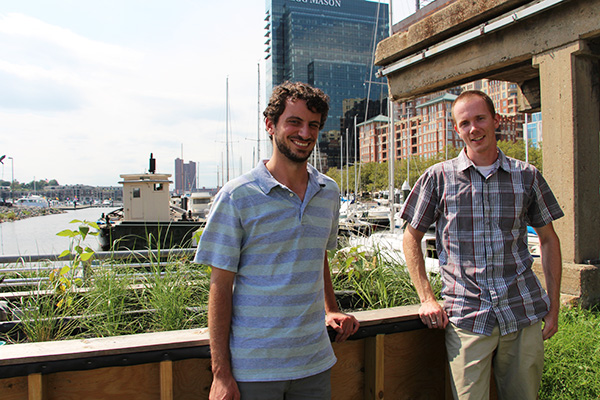
Keeping an intern busy
- Do what you do: Ask yourself what you can offer that no one else can, and focus on those areas. As consultants and design firms, the opportunities we are able to offer are unique in the field. Make sure that you play to those strengths.

- Partner with other organizations: An internship that offers a variety of experiences can be more interesting for the intern, logistically easier, and easier to manage. Many potential partners can’t prioritize spending on an intern or don’t have staff resources to accept an intern for an extended period, but would embrace the opportunity to help out as a mentor for a week. Think broadly throughout your network. Is there a watershed group you know who could use office help? Do you know a small forestry or design business that would be able to accept a job-shadow intern for 3 days or a week? Do you know a nature-oriented camp that might take on your intern as an assistant counselor?
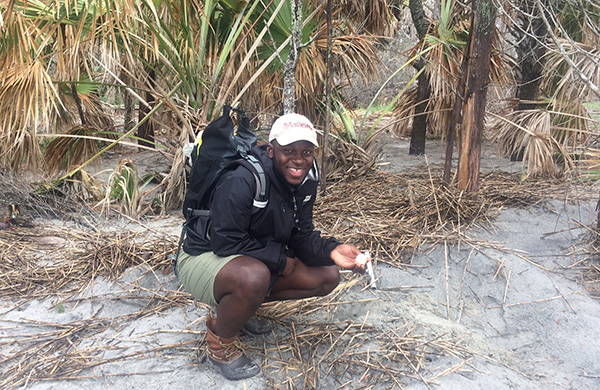
On a national scale, there are a lot of people expert in youth employment who work constantly to place interns with willing organizations—career services at your staff’s colleges might be a place to start. Speaking with the people who run such programs may also uncover opportunities to help that are not publicly advertised. A great example is the Doris Duke Conservation Scholars Program.
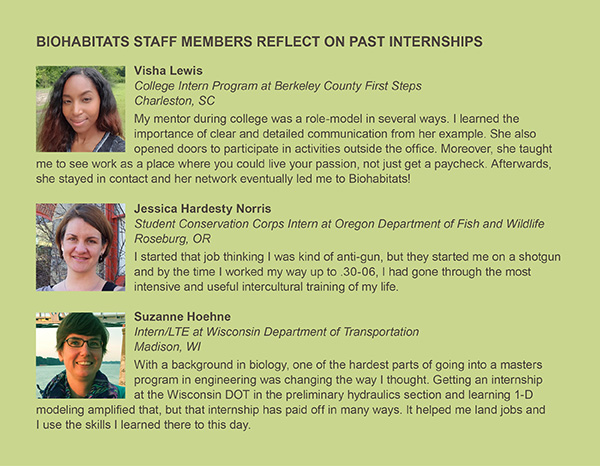
David was my last interview of the day. The coffee I had just ordered was distressingly small, and I thought longingly of the bottomless cups in US diners. I looked at the clock. 10 minutes until our 4:00 appointment, but in Peru, I knew that could mean anywhere from 15 to 45 until we would get started.
I had arrived five days earlier to study altitudinal migration in Andean hummingbirds, new to Cuzco but with three years of living in South America under my belt. My first step was to find assistants, so I spent my second altitude-woozy day hanging flyers around the local college’s biology department. The email responses started soon after. All were young men, but deep down, I figured that was probably for the best. The work of hacking net trails through the jungle is brutally physical, and I needed heavy manual labor as much as biological savvy. Earlier that day, I had met the young man I thought I would take, the bright, voluble Sebastian.
A young woman approached the table just before 4:00.
“Are you the doctor?” she asked.
“Well, no, I am not a doctor,” I answered, smiling.
“The one who studies birds?” she pressed.
“Oh! Then, yes. But I’m not a doctor yet,” I said. She bent down to give me the gentle buss to the cheek that young Peruvians use to greet each other.
“I’m Davi.” I quickly reoriented myself. She was in her early twenties, with a round figure and dimples. She had taken care with her appearance that day, showy earrings, long hair glossed, high heeled sandals under tight jeans, and dramatically dark lip liner. A stark contrast with my own mannish field clothes and boots. I immediately felt a little awkward, knowing that she didn’t fit the profile of what I was looking for at all. After her initial introduction, she sat and became very shy. I told her a little bit about the work, leaving pauses for questions that never came. The questions I asked her were answered in monosyllables. I tried to wrap up after about 15 minutes, telling her that I appreciated her sending a resume and that I would be in touch. When I stopped talking all together, she finally said:
“I want to know if you will hire me for the job.”
I can’t remember exactly how I answered, only that it was uncomfortable and I felt guilty and I managed to extract myself. I left the restaurant and emailed Sebastian that the job was his if he wanted it. I was pretty sure that he would. I was offering a stipend that was a good wage for a college student in a country with rampant unemployment and few opportunities. I figured that was what drew Davi, a sort of a hail Mary attempt to get a paying job. Nevertheless, I emailed the rejected candidates and offered to take them with me as volunteers. Only Davi said yes. I figured the worst case scenario wasn’t that bad – buses back to Cuzco would run from our field site every other day.
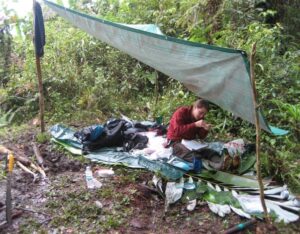
So here’s the punchline: Davi kicked ass. The early days setting up our net runs were miserable even for me. We worked through blisters, insane plagues of cloud forest bugs, ramen for dinner night after night, and total physical exhaustion, rinsed and repeated for days on end. She quickly demonstrated that she was not only tough as nails but also smart. She mastered the complex data sheets (in English) instantly and helped me with insights as we talked through the science and intent of the project. I pulled her aside after the first few days and told her I would pay her the same as Sebastian. She taught me more about how hard it was to get started in the profession. I had unwittingly skirted the normal procedure for hiring by posting my flyers – usually all such opportunities were curated by the professors and awarded to an insider clique.
The story has a pretty fantastic ending. A prominent conservation organization came to town to hire a field coordinator at the end of the summer, and Davi went up against dozens of experienced students and assistants from Cuzco. She read everything she could find about the organization. She read the science papers its leaders published in grad school. I wrote her a recommendation that was two single-spaced pages. We talked about all the ways to improve from our interview. We practiced. We drank Pisco Sours to loosen up and practiced more. When the day arrived, she called me minutes after leaving the interview. She had walked in and when they asked the first question, “my tongue escaped!” she said. She was nervous and ran through everything she had to say without pausing. The lead biologist laughed and told her that usually he asked more than one question, but then he canceled the rest of his interviews and hired her on the spot. A few years after she started working for them, she married a red-headed ornithologist, and they and their beautiful children divide their time between his country and hers.
That was almost 15 years ago, now, and I still count that experience with Davi as one of the most rewarding of my professional life, even though nothing about it was an accomplishment of mine. I initially failed to identify her exceptional talent and grossly underestimated her fortitude. Despite years living in small Andean towns, I didn’t place her cultural context very well: her “timidity,” her style, her home life. Moreover, if Davi had been born in my comfortable shoes, she wouldn’t have needed an oblivious foreigner to stumble into offering her a break. Nevertheless, the joy I took in her success is something I remain eager to recapture, and it’s one of the most powerful ways professionals can directly engage in giving back opportunities that we are uniquely positioned to give.
I have since dabbled in internships and mentorships through several jobs. I was working at World Wildlife Fund when Hurricane Katrina hit and LSU closed for the semester, so I established a WWF internship for their students. I now run Charleston Audubon’s annual summer internship program. Biohabitats is currently refining and restructuring our internship program to meet broader goals than it has in previous years, primarily by investing more closely in our community. As consultants, we have a unique opportunity to open doors for young people in our field. I’d like to share a few tips from my experience running internships for Charleston Audubon and from Biohabitats’ experience from our pilot year of partnering with Green Streets Academy’s Intern program:
FINDING AN INTERN
Start Small: Two interns is a great number for your first year. You and your organization will learn a lot about running internships, and you can always expand in subsequent years.
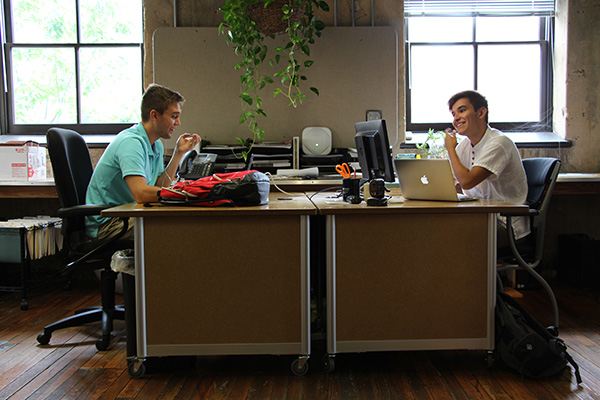
Offer money: You should at least compete with other typical summer employment options such as waiting tables. Free internships self-select a group of young people who can afford not to work for pay. They might not be the ones you most want to reach.

You don’t have to start from scratch: Many well-run and established local internship programs turn away great candidates. Reach out and see if you can scoop up some they are not able to place. For example, the South Carolina Aquarium has an award-winning internship that selects 20 finalists who go through 157 hours of training before 10 are invited into the program for the summer. Charleston Audubon piggybacked on that program to offer our internship to the ones who were not selected. The lesson here is that people who run large programs often have tough decisions to make at the last minute and are delighted to offer something else to the rejected candidates.
Look close to home: Transportation is the number one obstacle for many youth looking for internships. Build transportation planning into your plans and interviews from the get-go.

KEEPING AN INTERN BUSY
Do what you do: Ask yourself what you can offer that no one else can, and focus on those areas. As consultants and design firms, the opportunities we are able to offer are unique in the field. Make sure that you play to those strengths.

Partner with other organizations: An internship that offers a variety of experiences can be more interesting for the intern, logistically easier, and easier to manage. Many potential partners can’t prioritize spending on an intern or don’t have staff resources to accept an intern for an extended period, but would embrace the opportunity to help out as a mentor for a week. Think broadly throughout your network. Is there a watershed group you know who could use office help? Do you know a small forestry or design business that would be able to accept a job-shadow intern for 3 days or a week? Do you know a nature-oriented camp that might take on your intern as an assistant counselor?

On a national scale, there are a lot of people expert in youth employment who work constantly to place interns with willing organizations—career services at your staff’s colleges might be a place to start. Speaking with the people who run such programs may also uncover opportunities to help that are not publicly advertised. A great example is the Doris Duke Conservation Scholars Program.

